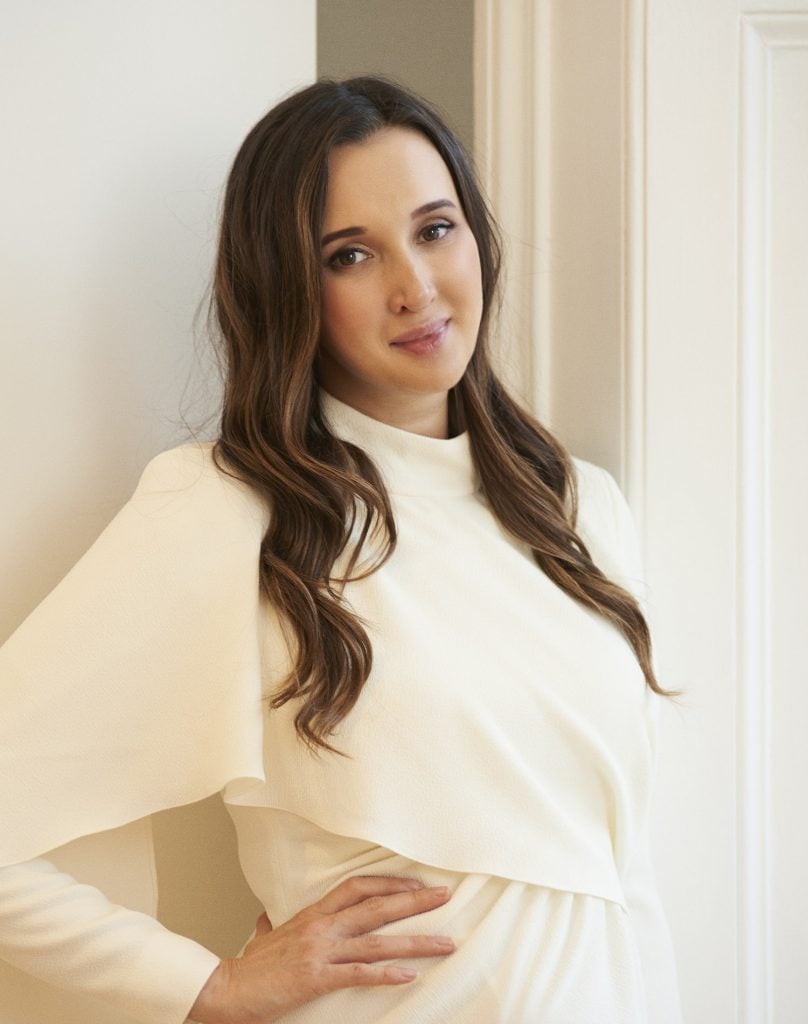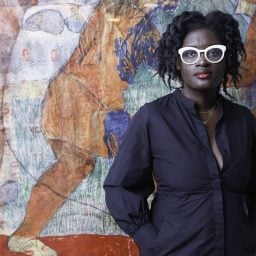The Moscow-born arts entrepreneur, philanthropist, and collector Maria Baibakova wears many hats.
Putting her degrees from Barnard College, the Courtauld Institute of Art, and Harvard Business School to practical use, she runs
Baibakov Art Projects, which she founded in 2008 to exhibit the work of pioneering women artists globally.
The nonprofit’s debut venture helped transform the former Red October chocolate factory in central Moscow into a vibrant space for art and community with a mammoth, 70-artist exhibition that aimed to bring international attention to Russian contemporary art and artists.
Since then, Baibakov Art Projects has gone on to exhibit critically-acclaimed shows in cities around the world, and has expanded into a multi-pronged organization with curatorial, strategic, consulting, and philanthropic arms—all of which hew to Baibakova’s vision.
Baibakova is also adept at advocating for women artists through other groups and organizations. She was a founder of the New Museum’s Artemis Council for women artists and a member of the executive committee of the Association of Women in the Arts in London. As a trustee of her alma mater, Barnard, she founded a scholarship for women studying art history. She is involved in a number of philanthropic initiatives, too—including UN Women UK, for which she conceived an initiative to highlight women-identifying artists through commissions of textile-based work.
Artnet News recently spoke with Baibakova to discuss her collection and philanthropy. Read on for our interview below.
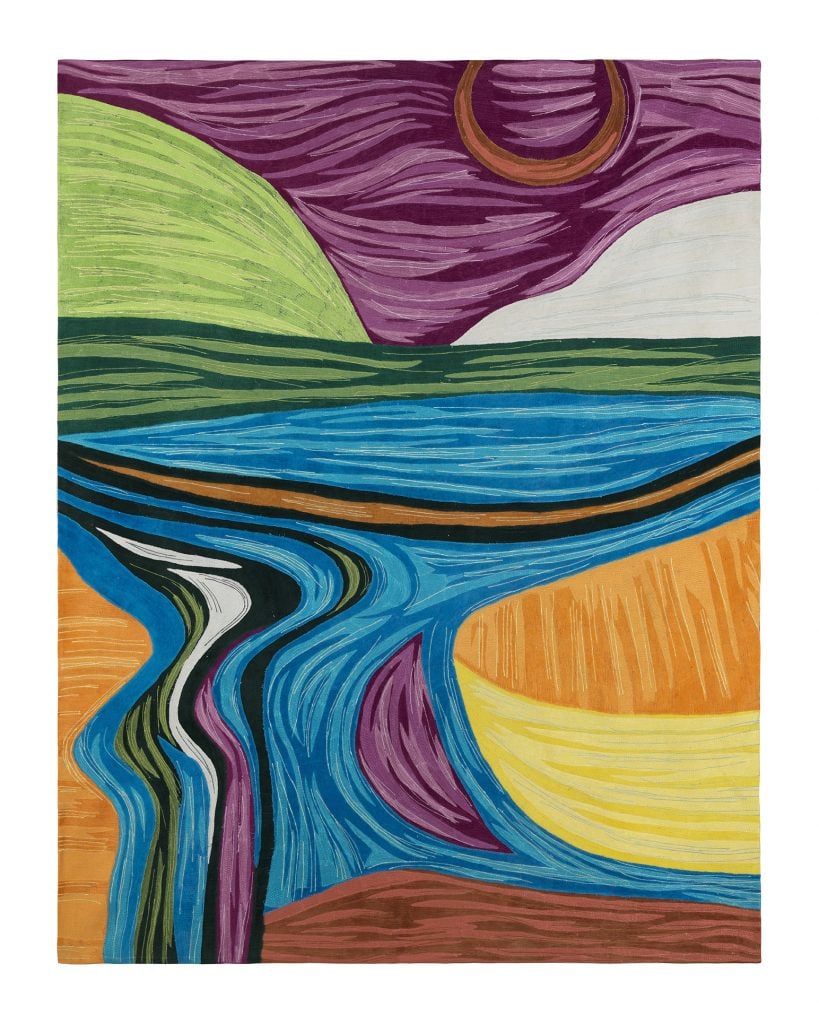
Marina Perez Simão’s edition for UN Women UK, Untitled (2021). Courtesy of Maria Baibakova.
What was your most recent purchase?
The edition I commissioned from Marina Peréz Simao for my philanthropic initiative called
The Art of Empowerment, which I started in support of UN Women UK four years ago. I serve as the organization’s senior adviser on arts and philanthropy. Every year, I commission an artist who identifies as a woman to create a limited-edition artwork using fabric and stitching or quilting, in reference to the craft that has historically connected women across ages and cultures. I pre-purchased the edition ahead of its release on December 8
—a perk of being a commissioner, as we usually sell out within a few hours of launch!
Which works or artists are you hoping to add to your collection this year?
I have my eye on a few artists whose waitlists I am on, but don’t want to jinx it! My focus is on artists who identify as women, and there are many talented artists whose works I hope to be able to acquire to add to the conversation among artworks in my collection.
What is the most expensive work of art that you own?
My eldest son’s first scribble of a car when he was one year old…at the cost of countless sleepless nights, I raised a human that can draw a circle! So proud.
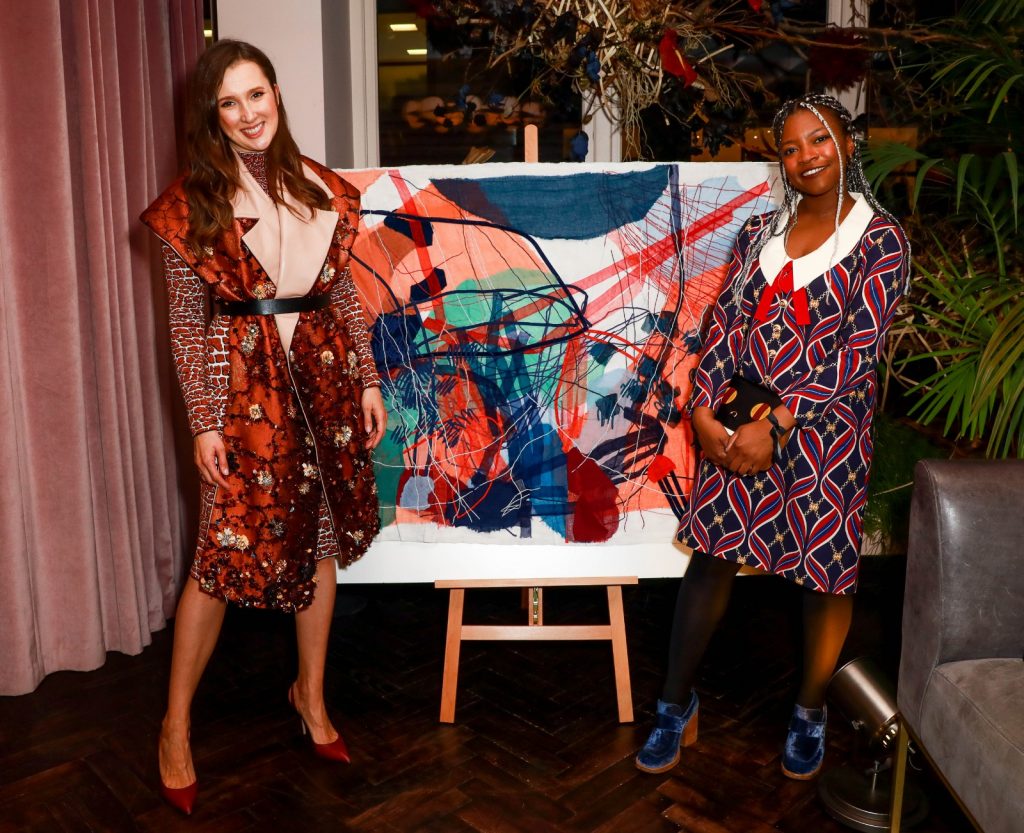
Baibakova with artist Jadé Fadojutimi. Courtesy of Maria Baibakova.
Where do you buy art most frequently?
At galleries, and the smaller the better. I believe that galleries are key to the art ecosystem. Whenever I land in a new city, the first thing I do is get in contact with the local gallerists— they are often the best gateways to access and understand the local cultural scene. A good gallerist is someone who supports the artist and relentlessly stewards their career in the right direction, making sure that curators and art critics are aware of the work, all the while educating their collectors.
Is there a work you regret purchasing?
I’m afraid there are such works, but I believe that happens to every collector as they evolve their taste and vision. In fact, I once heard the phrase that collecting is a “lifetime of regret”—you regret that you didn’t buy something when you could, or you regret that you bought it, despite being unsure. You regret you sold something when someone convinced you to, even though you did not want to part with the work, or you regret not taking that unsolicited offer when it came, because you could have parted with the work and bought something else instead.
How do you like to display your artwork?
On the walls, of course! I’m old school. I haven’t yet caught on to the idea of hanging a screen that features a rotating collection of NFTs, although I’m sure I’m sure I will live to regret my ignorance soon.
What work do you have hanging above your sofa? What about in your bathroom?
A diptych by Chemu Ng’ok, whose work the New Museum featured in a prior triennial. I am a big fan of the New Museum curators, as I work closely with them on my Artemis Council for women artists, which I started at the New Museum together with [director] Lisa Phillips in 2015. Margot Norton is great at spotting talent, and I am always learning from her.
My bathroom features a photograph by Marilyn Minter, who is force of nature and a powerful advocate for social change. I admire her relentless commitment to the democratic and women’s-rights causes that she champions. And the soap bubbles in the photo are appropriate for the above-the-bathtub location!
What is the most impractical work of art you own?
A video by Diana Thater that I love but can no longer play because I don’t have a video cassette player.
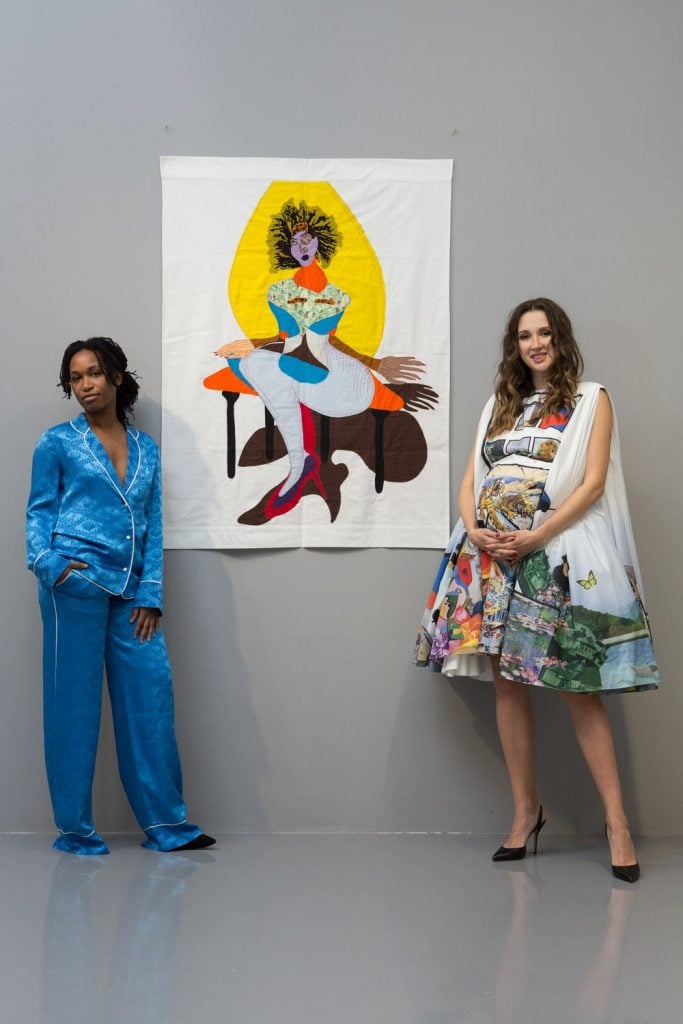
Baibakova and artist Tschabalala Self. Courtesy of Maria Baibakova.
What work do you wish you had bought when you had the chance?
A portrait by Amy Sherald.
If you could steal one work of art without getting caught, what would it be?
I would steal The Smoker, a painting by Natalia Goncharova in the Morozov Collection that is currently on view at the Fondation Louis Vuitton in Paris on loan from the the Tretyakov Gallery in Moscow—which is the first museum I ever went to as a Soviet child, and subsequently the first I ever worked for while in college.
What does art mean to you?
Art for me the ultimate reflection of the life to which it is contemporary. I am a student of art history and what I most appreciate about art is how it can be a gateway to understanding a period of time. Although I specialize in curating and collecting contemporary art, meaning art made after World War II, I often reflect on the fact that every artist was “contemporary” in their time. I appreciate artists for guiding viewers throughout time into a conversation about what was—and is—important.
What does style mean to you? How do you define the relationship between art and style, in your view?
Style is something that is subjective and personal—it cannot be easily taught or learned (although I wish someone would teach it to me)! I admire those who can connect architecture, art, design, lighting, crafts, and fabrics and create immersive settings, but at the end of the day personal style is something that feels authentic. The art a collector owns is just one expression of that person’s multifaceted personal history, and the more complex and expanded that visual narrative becomes, the more the artworks benefit. Style can feel effortless, but behind the veneer of “Oh, I just threw this together quickly” is years of commitment, research, knowledge, and a good dash of intuition.
